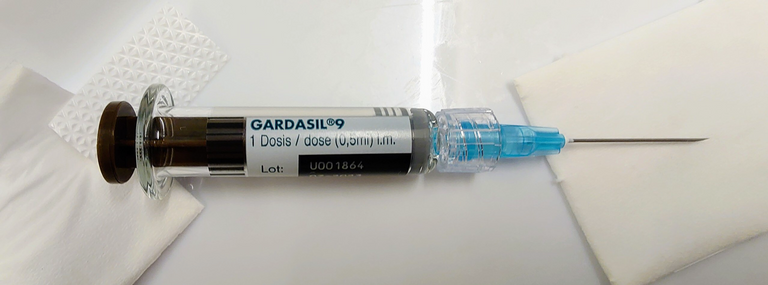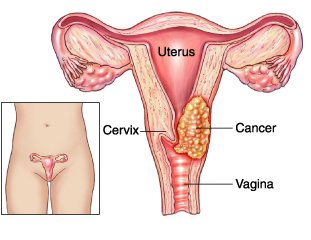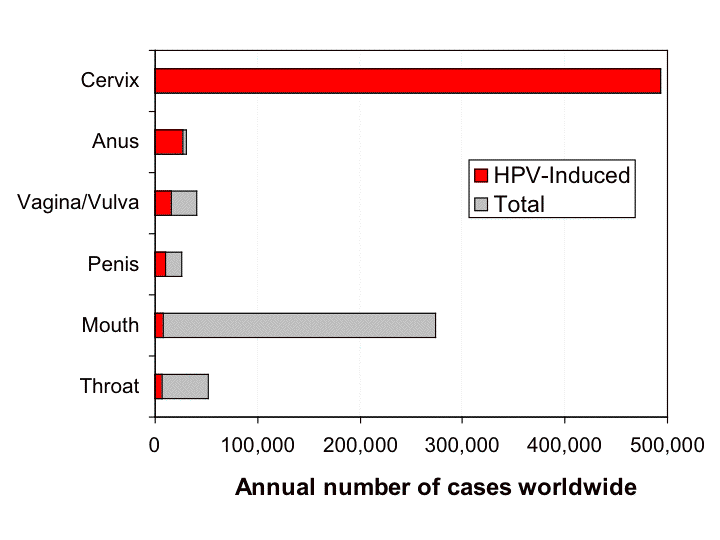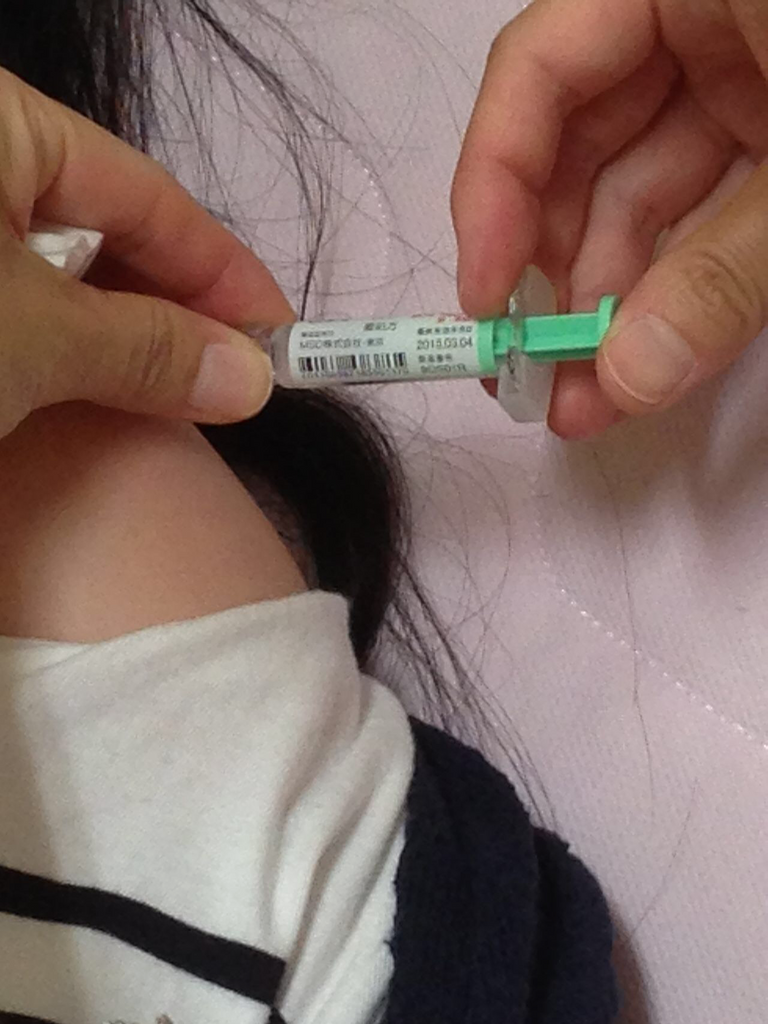CERVICAL CANCER AND HUMAN PAPILLOMA VIRUS.

By Tintin0312 - Own work, CC BY-SA 4.0, Wikimedia
Hi Hivers, Welcome to another educative post from your favorite nurse and midwife-in-training. Today, you'll get to know about the most common cancers in women and also answers, to some frequently asked on cervical cancer. I hope you have a good time reading.
What is Cancer?
Cancer is a group of diseases that causes the cells of the body to grow without control and become abnormal cells. The cells become abnormal due to a change in the cell’s DNA (mutation). Cancerous cells can spread to other parts of the body and can cause death. Several factors can lead to cancer and in some cases, there is no cause.

By Lolaia - Own work, CC BY-SA 4.0, Wikimedia
What is Cervical Cancer?
Cervical cancer is a cancer of the cervix. The cervix is the entrance into the womb from the vagina. It is sometimes called the neck of the womb. Cancer of the cervix is a condition where cancerous cells attack the cervix.
Can Cervical Cancer be prevented?
Cancer of the cervix can be prevented and treated if detected early. However, Some factors can increase the chance of developing cervical cancer. They are known as risk factors; such as;
- Family history
- Early onset of sexual intercourse.
- Multiple sexual partners.
- Smoking.
- Low immune system (People living with the Human Immune Virus, People with a history of organ transplants).
What are the causes of Cervical Cancer?
According to Research, Out of 10 women with cervical cancer, Human Papilloma Virus is the main cause of cervical cancer in at least 8 of the women.
Human Papilloma Virus (HPV) infection is the most common sexually transmitted infection worldwide. It has over 200 types with each having a different number. Of these 200 types, type 16 and 18 causes cervical cancer and they are known as high-risk type. There is also low-risk types of Human Papilloma Virus such as; type 6 and 11. They cause diseases such as warts.

By Retroid - en:wiki, Public Domain,Wikimedia
Human Papilloma Virus
Human Papilloma Virus is a sexually transmitted disease that both males and females can contract. It spreads through direct contact with the skin, mucous membranes, and body fluids of infected persons. Apart from cervical cancer, This virus can also cause cancer of the head, neck, anus, vulva, and vagina. In a healthy individual, the body can naturally destroy HPV but continuous infection with the virus can alter the body's immune system and trigger an inflammatory response in the part of the body affected.
Symptoms of Cervical Cancer.
Though the early stage of cervical cancer is usually asymptomatic (absence of symptom), there are some common symptoms associated with cervical cancer such as;
- Visible ulcers around the cervix.
- Abnormal vaginal bleeding especially after sex (Postcoital bleeding).
- Bleeding between menstrual flow (Intra-menstrual bleeding).
- Bad odor from vaginal discharge.
How to prevent Cervical Cancer.
Cervical Cancer is a preventable disease and below are some ways to prevent it.
Vaccination
Human Papilloma Virus (HPV) Vaccination is a primary method of preventing cervical cancer. It prevents the entrance of the virus into the body through the help of antibodies. it is best recommended before one becomes sexually active.
Safe Sex Practice.
Since HPV is a sexually transmitted vaccine, a safe sex practice can help prevent the contraction of the virus. Please note, The code for a safe sex practice is; ABCD
- A Abstinence
- B Be faithful to a faithful partner.
- C Proper Use of Condom.
- D Delay sexual debut.
Screening
This method aids early intervention. It detects abnormal cells through the use of the Papanicolaou Smear Test (Pap smear). Screening for cervical cancer should commence 3 years after one becomes sexually active or after 21 years until 65 years.
Health Education
It is commonly said that Education is the Key. The importance of health education cannot be overemphasized.
Answers to some commonly asked questions about Cervical Cancer
At What age should the HPV vaccine be taken?
World Health Organization recommends that the HPV vaccine should be taken between 11-12 years. It can also be taken as early as 9 years.Is the HPV vaccine for only females?
No, the HPV vaccine is for both males and females.How can someone know she has cervical cancer early?
Early detection of cervical cancer can be achieved through cervical screening.Does the HPV vaccine protect against other sexually transmitted diseases?
No, the HPV vaccine protects against diseases caused by Human Papilloma Virus.Is there any woman who should not do a Pap smear test?
Yes, women with a history of hysterectomy (removal of the womb), and women older than 65 years with previous negative Pap smear results do not need a Pap smear test.

By melvil - Own work, CC BY-SA 4.0, Wikimedia
In summary, Cervical cancer is a preventable disease, the combination of HPV vaccination and screening provides the best protection against it.
References and Further studies
Mayo Clinic
World Health Organization
Medscape
Cleveland and Clinic
This cervical cancer is a scourge for every woman who suffers from it. All types of cancer, when detected in time, can be treated with a good prognosis of recovery, although its recurrence in the body is not certain. If the woman has gone through several factors that make it possible for her to be on the list of cancer patients, she should ask her doctor for an evaluation that will offer her a clear and concise diagnosis. Keep in mind, in her medical history, the family history, since it can be hereditary; if she smokes, has started her sexual activity since her adolescence and has been a promiscuous person, she runs a very high risk of having this cancer.
Well presented and understandable your article. Thank you @silviafx
Este cáncer de cuello uterino es un flagelo para cada mujer que lo padece. Todo tipo de cáncer, al ser detectado a tiempo, se puede tratar con un buen pronóstico de recuperación, aunque no es seguro su reincidencia en el organismo. Si la mujer ha pasado por diversos factores que le posibilitan estar en la lista de enfermos cancerosos, debe informarse con su médico, haciéndose una evaluación que le ofrecerá un diagnostico claro y conciso. Tener pendiente, en su historial médico, los antecedentes familiares, ya que puede ser hereditario; si fuma, ha empezado su actividad sexual desde su adolescencia y ha sido una persona promiscua, corre el riesgo muy alto de poseer dicho cáncer.
Bien presentado y comprensible su artículo. Gracias @silviafx
Thank you so much @wayuu-reg So sorry for this late reply🥲
Thanks for your contribution to the STEMsocial community. Feel free to join us on discord to get to know the rest of us!
Please consider delegating to the @stemsocial account (85% of the curation rewards are returned).
You may also include @stemsocial as a beneficiary of the rewards of this post to get a stronger support.